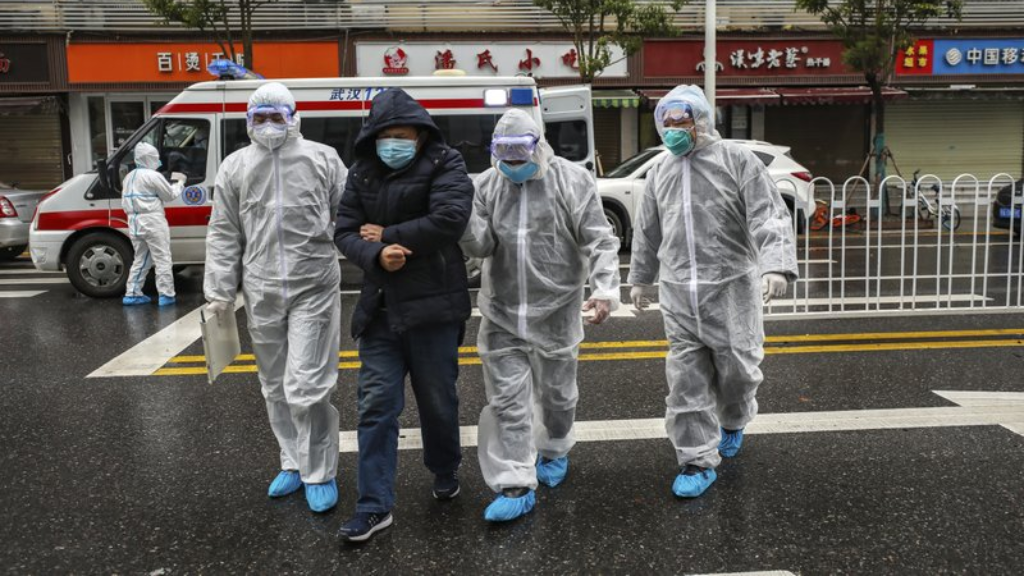An outbreak sparked by a new virus in China that has been exported to more than a dozen countries was declared a global emergency by the World Health Organisation on Thursday after the number of cases spiked tenfold in a week.
The UN health agency defines an international emergency as an “extraordinary event” that constitutes a risk to other countries and requires a coordinated international response.
China first informed WHO about cases of the new virus in late December. To date, China has reported more than 7,800 cases including 170 deaths.
Eighteen other countries have since reported cases, as scientists race to understand how exactly the virus is spreading and how severe it is.
Experts say there is significant evidence the virus is transmitting among people in China and have noted with concern several instances in other countries — including Japan, Germany, Canada and Vietnam — where there have also been isolated cases of human-to-human spread.
A declaration of a global emergency typically brings greater money and resources, but may also prompt nervous governments to restrict travel and trade to affected countries.
The announcement also imposes more disease reporting requirements on countries.
(THIS IS A BREAKING NEWS UPDATE. AP’s earlier story follows below.)
On Thursday, China raised the death toll to 170 and more countries reported infections from a worrisome new virus, including some spread locally, as foreign evacuees from China’s worst-hit region returned home to medical tests and even isolation.
Russia announced it was closing its 2,600-mile border with China, joining Mongolia and North Korea in barring crossings to guard against a new viral outbreak. It had been de facto closed because of the Lunar New Year holiday, but Russian authorities said the closure would be extended until March 1.
Train traffic between the countries was halted except for one train connecting Moscow and Beijing, but air traffic between the two countries continued, at least for now. Russia has not confirmed any cases of the virus.
Meanwhile, the United States and South Korea confirmed their first cases of person-to-person spread of the virus. The man in the US is married to a 60-year-old Chicago woman who got sick from the virus after she returned from a trip to Wuhan, the Chinese city that is the epicentre of the outbreak.
There have been cases reported of the infectious virus spreading to others in a household or workplace in China and elsewhere. The case in South Korea was a 56-year-old man who had contact with a patient who was diagnosed with the new virus earlier.
Human-to-human spread of the virus outside China has also occurred in Germany, Japan, Canada and Vietnam, and was a major reason the World Health Organization has convened its committee of experts Thursday to assess whether the outbreak warrants being declared a global emergency.
The committee last week had advised the UN health agency it was too early to make that pronouncement.
The new virus has now infected more people in China than were sickened there during the 2002-2003 outbreak of SARS, a cousin of the new virus.
The latest figures for mainland China show an increase of 38 deaths and 1,737 cases for a total of 7,736 confirmed cases. Of the new deaths, 37 were in Hubei province, of which Wuhan is the capital, and one was in the southwestern province of Sichuan. Outside China, there are 82 infections in 18 countries, according to WHO.
A second Japanese flight carrying 210 evacuees landed in Tokyo. Reports said nine of those aboard the flight showed signs of cough and fever. Three of Japan’s confirmed cases were among a group of evacuees who had returned on a government-chartered flight the previous day.
A flight was also en route to China to bring back 350 Europeans. The US said additional flights were planned for early next week after it evacuated 195 Americans from Wuhan on Wednesday. They are being tested and monitored at a Southern California military base.
South Korea, Britain, New Zealand, Australia, Singapore and other countries were also trying to get their citizens out. Taiwan, the self-governing republic China considers its own territory, has also asked to be able to repatriate its passport holders from Wuhan, but it was awaiting approval from Beijing.
Israel’s El Al, Spain’s Iberia, Scandinavian Airlines, Egypt Air and Korean Air joined the growing list of airlines suspending or reducing service to China.
In South Korea, residents in two cities where quarantine facilities were being prepared threw eggs and water bottles at government officials to protest plans to isolate in their neighbourhoods 700 South Koreans the government plans to evacuate from China.
Amid reports of shortages in food and daily necessities in hot-spot areas, Chinese authorities are “stepping up efforts to ensure a continuous supply and stable prices,” the official Xinhua News Agency reported.
It cited Ministry of Commerce data showing current reserves in Wuhan can ensure a secure supply of rice and cooking oil for more than 15 days, pork and eggs for more than 10 days and vegetables for about five days.
China’s highly developed online shopping and home delivery businesses were important in ensuring those confined to home by choice or by order could get food and other essentials.
China extended its Lunar New Year holiday to Sunday to try to keep people home, but the wave of returning travellers could potentially cause the virus to spread further.
Transport ministry spokesman Wu Chungeng outlined a series of rigorous temperature checks and other “severe measures” to detect possibly infectious passengers. Transport restrictions such as those isolating Wuhan and suspending inter-provincial bus services would remain in place, Wu said.
“It’s definitely very challenging, but we’re confident we can exert effective control,” Wu told reporters at the briefing.
The WHO emergencies chief, Michael Ryan, speaking in Geneva Wednesday after returning from Beijing, said China was taking “extraordinary measures in the face of an extraordinary challenge” posed by the outbreak.
To date, about 99% of the cases are in China.
Ryan estimated the death rate of the new virus at 2%, but said the figure was very preliminary. With fluctuating numbers of cases and deaths, scientists are only able to produce a rough estimate of the fatality rate and its likely many milder cases of the virus are being missed.
In comparison, the SARS virus killed about 10% of people who caught it.
The new virus is from the coronavirus family, which includes those that can cause the common cold as well as more serious illnesses such as SARS and MERS.
Chinese authorities have demanded anyone who travelled from or through Wuhan report to health authorities and self-quarantine themselves for 14 days, the maximum incubation period during which patients can be infectious even if they don’t show symptoms.
China has been largely praised for a swift and effective response to the outbreak, although questions have been raised about the police suppression of what were early on considered mere rumours — a reflection of the one-party Communist state’s determination to maintain a monopoly on information in spite of smartphones and social media.
That stands in stark contrast to the initial response to SARS, when medical reports were hidden as state secrets.
The delayed response was blamed for allowing the disease to spread worldwide, killing around 800 people.










